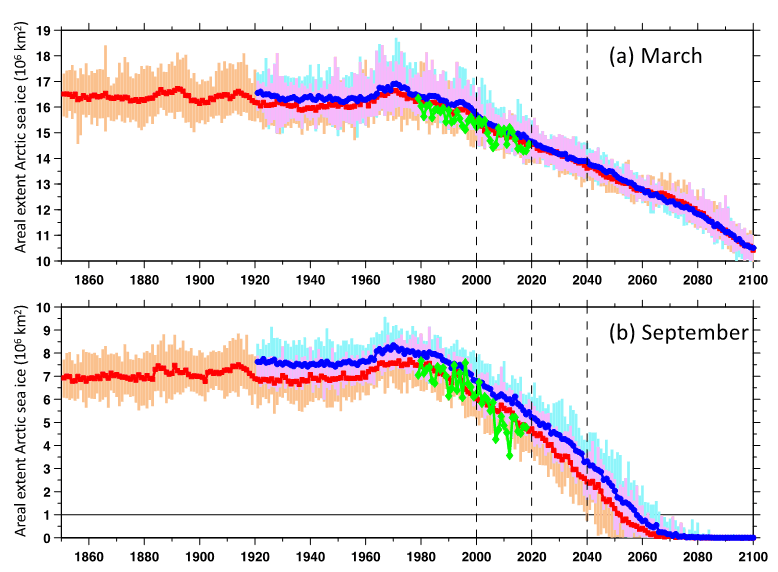April 10th, 2020
Key Findings
- A new coupled climate model, SPEAR, will form the basis of the next-generation GFDL seasonal-to-decadal prediction system. Model versions with different atmospheric horizontal resolutions are described.
- Assessment of the overall performance of the model demonstrates that it is able to replicate many features of the Earth’s climate system with a high degree of fidelity.
- One key aspect of the development processes involved the impact of the surface energy balance over Antarctica on the global ocean circulation. Sensitivity studies are used to show that near-surface atmospheric conditions over Antarctica exert an important influence on Southern Ocean deep water formation and the deep circulation of the global ocean.
- This was a crucial issue for model stability and realism, and also influenced the CM4 and ESM4 development processes.
Thomas L. Delworth, William F. Cooke, Alistair A. Adcroft, Mitchell Bushuk, Jan-Huey Chen, Krista A. Dunne, Paul Ginoux, Richard Gudgel, Robert W. Hallberg, Lucas Harris, Matthew J. Harrison, Nathaniel Johnson, Sarah B. Kapnick, Shian-Jian Lin, Feiyu Lu, Sergey Malyshev, Paul C. Milly, Hiroyuki Murakami, Vaishali Naik, Salvatore Pascale, David Paynter, Anthony Rosati, M. D. Schwarzkopf, Elena Shevliakova, Seth Underwood, Andrew T. Wittenberg, Baoqiang Xiang, Xiaosong Yang, Fanrong Zeng, Honghai Zhang, Liping Zhang, Ming Zhao. Journal of Advances in Modeling Earth Systems. DOI: 10.1029/2019MS001895
The models in use at GFDL for seasonal-to-decadal prediction have performed very well but are built off rather old model physics and other components. A multi-year effort was undertaken to build a next-generation seasonal-to-decadal prediction system that took advantage of many recent modeling advancements. This effort culminated in a new modeling system called the “Seamless system for Prediction and EArth system Research” (SPEAR).
The authors describe the formulation of the SPEAR modeling system and document its performance characteristics. The analyses presented in the paper, together with additional analyses in an online supplement, show that SPEAR is able to simulate many aspects of Earth’s climate system with a high degree of fidelity. These results indicate that SPEAR will be an outstanding next-generation model for prediction across time scales, from seasonal to multidecadal.
The paper also focuses on describing a process that played a significant role in model development – the influence of the near-surface climate over Antarctica on deepwater formation in the Southern Ocean and important characteristics of the global ocean circulation. A more realistic representation of the surface energy budget over Antarctica resulted in much improved aspects of the global ocean circulation, as well as reduced model drift. This issue is explored in the manuscript through a set of carefully designed simulations.
This project advances NOAA’s capacity to improve society’s ability to plan for and respond to changing environmental risks. It is anticipated that this new modeling system will become a part of the North American Multi-Model Ensemble system for seasonal prediction. This model will also be used in experimental decadal prediction, as well as a suite of research activities on seasonal-to-centennial time scales.

Sea ice units are millions of square kilometers. (a) March, (b) September. For each panel the red line and symbols are the 30-member ensemble mean from SPEAR_LO (lower resolution model version), while the blue line and symbols are the 30-member ensemble mean from SPEAR_MED (higher resolution version). The tan (light blue) shading shows the range of values each year across the ensemble members from SPEAR_LO (SPEAR_MED), showing the impact of natural variability each year. The magenta shading indicates where the distributions of SPEAR_LO and SPEAR_MED overlap. The three vertical dashed lines are for ease of reference to identify years 2000, 2020, and 2040. The thick green line and symbols show the observed sea ice extent for 1979 to 2018.


